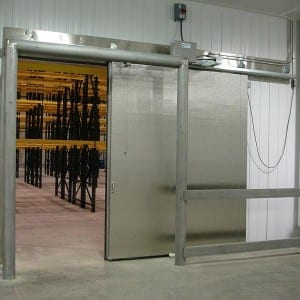
Did you know a single weak link in your building envelope can have a major impact on your food plant’s energy efficiency? Take your facility’s doors and door openings. In an otherwise well-insulated and well-designed facility, an improperly designed door opening can erase a big portion of energy and utility savings. Your entire building envelope, from the windows to the walls, must be tightly sealed to achieve the utmost energy efficiency — including the doors. Installing the proper door will have a positive impact on your facility’s energy costs and productivity, while an improper door can result in: Wasted energy Increased utility costs Downtime Costly damage Possibly unsafe conditions To determine the most appropriate door types and materials for your facility, your design firm should examine all aspects of your plant’s operations. 5 questions to facilitate energy-efficient doors Answer these five questions to ensure your doors and door openings facilitate the most energy savings for your food processing plant: 1. What are the operating temperatures within your food plant? — Consider the normal and extreme operating parameters of your food plant to ensure doors are equipped to withstand the conditions, including humidity. For example, if you have doors in an area with below-freezing temperatures, you’ll need heated components to prevent the door from freezing shut and to keep elements (such as gasket seals) pliable. You may also incorporate non-heated design features with integral thermal breaks into the construction of this door, which reduces the electrical energy needs of the door. Controlling high-humidity areas, on the other hand, increases the need to decrease airflow by reducing the time the door is open through higher opening speed or by utilizing horizontal air curtains. 2. What is the opening frequency of your door? — In other words, how many times per day […]



Leave a Reply
You must be logged in to post a comment.